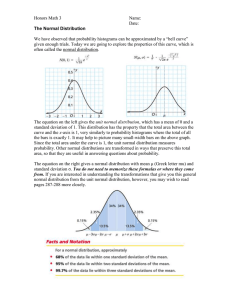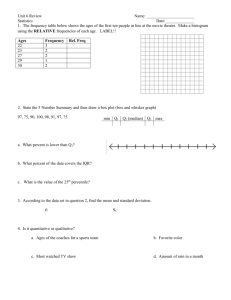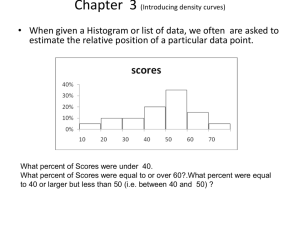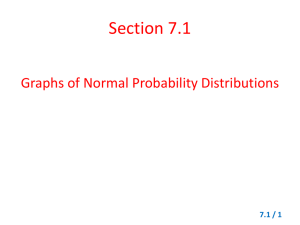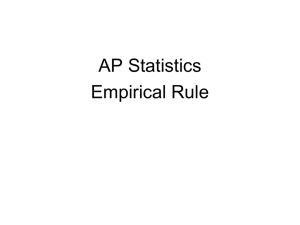Density Curves and Normal Distributions
advertisement
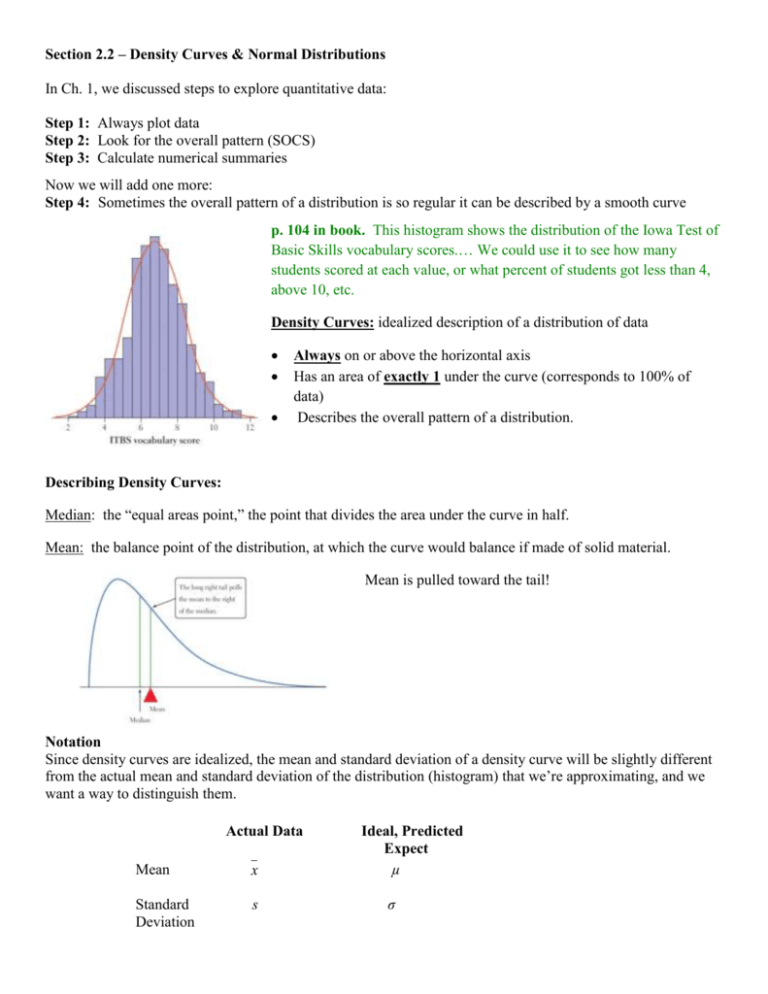
Section 2.2 – Density Curves & Normal Distributions In Ch. 1, we discussed steps to explore quantitative data: Step 1: Always plot data Step 2: Look for the overall pattern (SOCS) Step 3: Calculate numerical summaries Now we will add one more: Step 4: Sometimes the overall pattern of a distribution is so regular it can be described by a smooth curve p. 104 in book. This histogram shows the distribution of the Iowa Test of Basic Skills vocabulary scores.… We could use it to see how many students scored at each value, or what percent of students got less than 4, above 10, etc. Density Curves: idealized description of a distribution of data Always on or above the horizontal axis Has an area of exactly 1 under the curve (corresponds to 100% of data) Describes the overall pattern of a distribution. Describing Density Curves: Median: the “equal areas point,” the point that divides the area under the curve in half. Mean: the balance point of the distribution, at which the curve would balance if made of solid material. Mean is pulled toward the tail! Notation Since density curves are idealized, the mean and standard deviation of a density curve will be slightly different from the actual mean and standard deviation of the distribution (histogram) that we’re approximating, and we want a way to distinguish them. Actual Data Mean x Standard Deviation s Ideal, Predicted Expect µ σ Normal Distributions: Normal Curves are always: Symmetric, Single-peaked, and bell-shaped Described by the mean µ and standard deviation σ Notation: N(µ, σ) read as Normal distribution with mean µ and standard deviation σ **The larger the standard deviation (σ), the more spread out the curve will look. The 68-95-99.7 Rule 68% of data falls within 1 standard deviation of the mean: µ ± σ 95% of data falls within 2 standard deviations of the mean: µ ± 2σ 99.7% of data falls within 3 standard deviations of the mean: µ ± 3σ 68% 95% 99.7% -3 -2 -1 0 1 2 3 Heights of Young Adult Women The distribution of heights of young women aged 18 to 24 is approximately normal with mean µ = 64.5 inches and standard deviation σ = 2.5 inches. 68% 95% 99.7% 57 59.5 62 64.5 67 *What percentile of young women are 64.5 inches or shorter? 50% *What percentile of young women are 59.5 inches or shorter? 2.5% *What percentile of young women are between 59.4 and 64.5 inches? 47.5% HW: p. 129 # 39, 40, 41, 43 Due: Block Day 69.5 72


